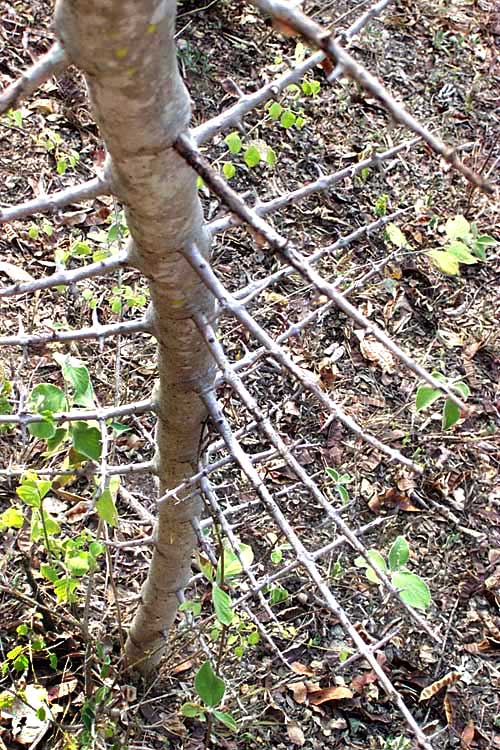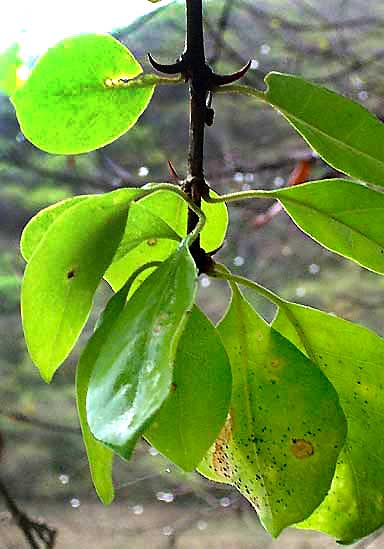Excerpts from Jim Conrad's
Naturalist Newsletter
from the June 29, 2007 Newsletter issued from Sierra Gorda Biosphere Reserve, QUERÉTARO, MÉXICO
SPINES ON SPINES ON SPINES
Wandering on the scrubby slopes here you don't want to lose your balance and grab at the stem shown below:

Not only does the stem shown there possess spines on spines on spines, but also the final spines are curved so that anything that gets punctured will probably get ripped, too. This is one of the most aggressively spiny stems I've ever seen. But spininess isn't this plant's only distinction: It's also a perfect example of a "half tree, half vine" state.
If you follow the spiny stem in the picture upward you'll see that soon itz branches soon start leaning into neighboring trees, and eventually become so slender and lithe that they really are nothing more than vines. Below, you can see such a viny, leafy branch-tip:

The plant is PISONIA ACULEATA, a member of the Four-o'clock Family, the Nyctaginaceae, along not only with Four-o'clocks but also Bougainvilleas. Of course in English it's known as Cat-claw and Devil's-claw, but the name that seems to appear most in the literature is "Pull-back-and-hold." It's also known as Catchbirdtree, for reasons I hate to think about.
The species is nearly "pantropical" -- native throughout the New World's tropics but introduced in many other places. In the US it reaches southern Texas and southern Florida.